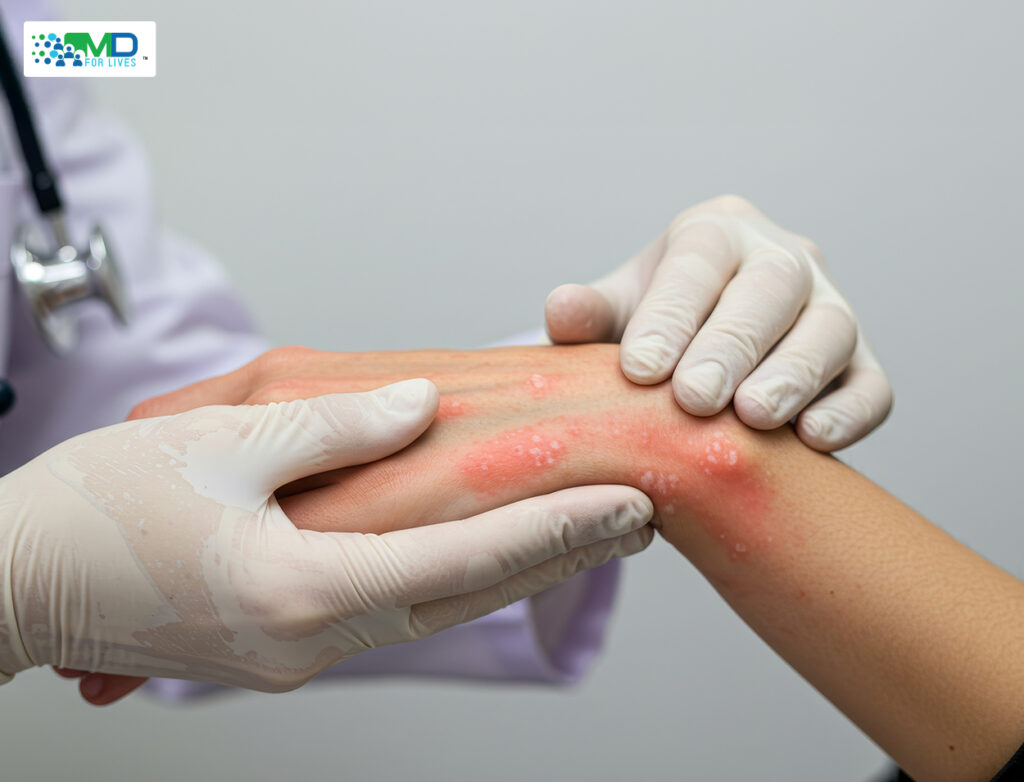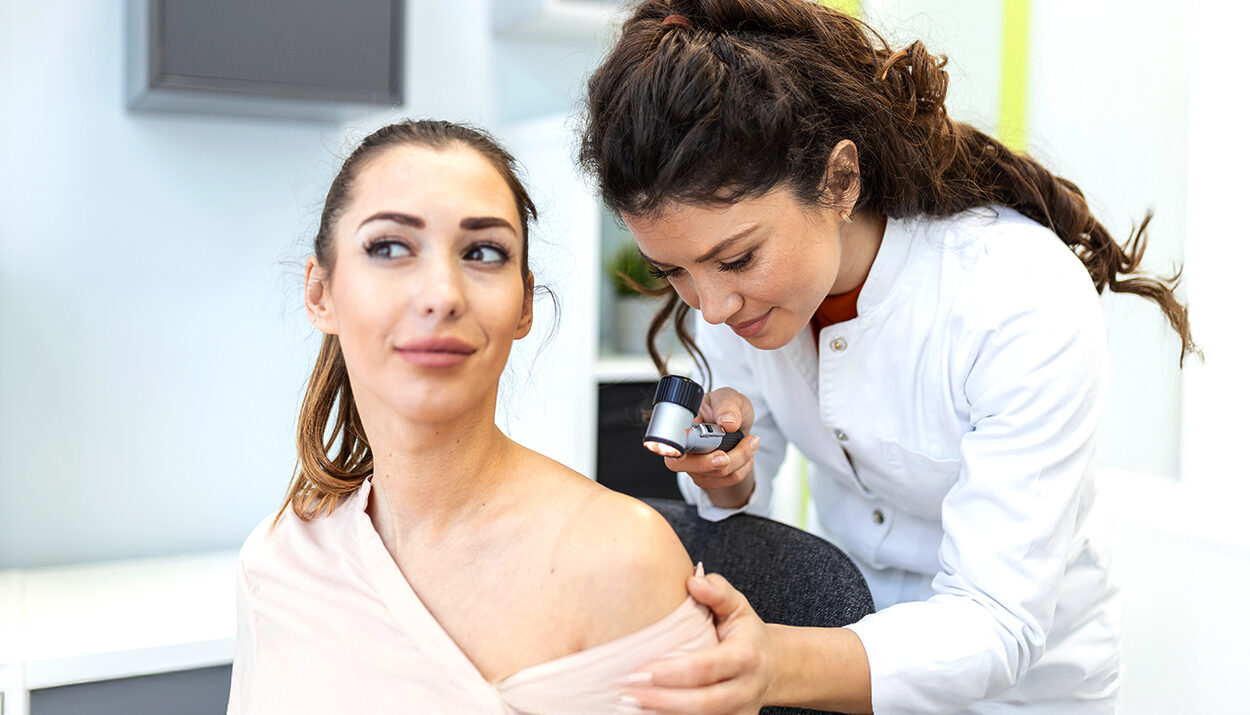The field of dermatology is entering a phase where science, consumer awareness, and technology are converging like never before. No longer is skincare just about creams and serums. Today, it is about microbiomes, smart diagnostics, minimally invasive treatments, and ingredient integrity. In 2025, dermatology trends include not just innovation, but also balance – protecting the skin barrier, avoiding unnecessary product overload, and making decisions based on science rather than fleeting beauty trends.
As climate stress, digital exposure, and lifestyle pressures increase, dermatology is evolving fast to meet both the clinical and aesthetic demands of modern life. In fact, dermatologists are now addressing not only traditional concerns like acne, pigmentation, and eczema but also newer issues such as blue-light damage, environmental sensitivity, and more.
September 2025 has brought several notable dermatology updates – from the shift to “skinimalism” to AI-powered dermatology drug discovery, and more! Therefore, whether you are a dermatologist, skin researcher, or skincare enthusiast for medical surveys, here are the standout dermatology trends shaping this month.
Listing Out 5 Key Dermatology Trends & Updates in September 2025
#1 Back-to-Basics Skincare: The Rise of Minimalism
According to recent dermatology news, dermatologists are increasingly cautioning against “skincare overload,” a growing issue fueled by viral recommendations and the excessive layering of actives like retinol, AHAs, BHAs, and vitamin C. While these ingredients can be effective, overuse often leads to barrier disruption, sensitivity, and breakouts.
Experts now advocate a return to essentials:
- Gentle cleanser that removes impurities without stripping natural oils.
- Moisturizer that restores hydration and strengthens the skin barrier.
- Broad-spectrum sunscreen (SPF 30+) that effectively creates defense against premature aging and skin cancers.
This minimalist routine supports skin health, reduces irritation, and saves money, while cutting back on unnecessary steps and products. Dermatologists stress that targeted actives should be used thoughtfully, not as daily staples.
The dermatology trend toward “skinimalism” reflects a shift in beauty culture, proving that when it comes to skincare, less can truly be more.
Want to Share your Insights! Register Now and Participate in Dermatology Survey for Doctors
#2 Hypochlorous Acid: From Wound Care to Skincare Essential
Once confined to hospital wound-care kits, hypochlorous acid (HOCl) is now making waves in everyday skincare. Dermatologists value it for its antimicrobial, anti-inflammatory, and healing properties, which help reduce bacteria, calm redness, and support barrier repair. This makes it especially appealing for acne-prone, rosacea-prone, and sensitive skin types that often struggle to tolerate stronger actives.
Unlike harsher treatments, HOCl is gentle yet effective, offering benefits without the stinging or peeling commonly associated with acids. It is increasingly being formulated into mists, sprays, and serums, where it can double as a calming toner, post-treatment soother, or acne-fighting adjunct.
However, dermatologists caution that HOCl is unstable when exposed to light and air (as per latest dermatology research). To preserve potency, products must be packaged in opaque, air-tight containers. Without proper formulation and packaging, its effectiveness can degrade quickly.
As consumer demand grows for multi-functional, skin-friendly ingredients, hypochlorous acid is emerging as a star player, bridging the gap between clinical science and cosmetic skincare.
#3 Psoriasis Treatment & Practice Guidance

As per the latest news in dermatology, skin & hair clinics in the UK are emphasizing evidence-based, practical approaches to psoriasis management. Updated guidance highlights that while advanced biologics and systemic therapies continue to expand, the foundation of treatment remains rooted in topical care, particularly for mild-to-moderate cases.
First-line options include:
- Vitamin D analogues – to help regulate skin cell growth.
- Topical corticosteroids – varying in strength depending on severity and site.
- Combination foams and gels – to improve adherence and absorption.
- Medicated shampoos – designed for scalp involvement, a common and stubborn site.
- Short-course potent steroid foams/lotions – for flare control, used under dermatological supervision.
One key area of refinement is the “scalp strategy.” Clinicians are moving beyond generic prescriptions and tailoring regimens that fit patients’ daily routines, making treatments easier to integrate and more sustainable long-term. This patient-centered approach recognizes that adherence, and not just potency, determines real-world outcomes.
As psoriasis is a chronic and relapsing condition, dermatologists stress the importance of stepwise management, moving from topical agents to phototherapy or systemic therapies only when necessary. This ensures both safety and efficacy while minimizing side effects.
#4 AI-Powered Dermatology Drug Discovery
In the U.S., Almirall has partnered with Absci to harness artificial intelligence and synthetic biology for drug discovery in challenging dermatological conditions. The collaboration aims to accelerate the development of novel biologics – therapies designed to target diseases that remain difficult to treat with conventional approaches, such as chronic inflammatory skin disorders.
By combining Absci’s AI-driven protein design platform with Almirall’s dermatology expertise, the partnership hopes to shorten discovery timelines, improve candidate selection, and bring innovative treatments to patients faster. Industry experts view this as part of a broader trend where AI is reshaping R&D, offering new hope for patients with conditions that currently have limited therapeutic options.
#5 LEO Pharma’s Upcoming Dermatology Studies
LEO Pharma is preparing to present multiple new studies focused on chronic hand eczema as well as a pipeline of biologic therapies and innovative formulations in injectables, foams, and creams. These developments reflect the company’s commitment to addressing hard-to-treat dermatological conditions where patient needs remain high and treatment options limited.
Many of these therapies are expected to be particularly relevant in European markets, including Germany and Italy, where regulatory approvals or future marketing authorizations are anticipated. By broadening its portfolio across both systemic and topical innovations, LEO Pharma is aiming to provide more flexible, patient-friendly treatment choices that can be tailored to disease severity and daily routines.
The upcoming data could significantly influence clinical practice in Europe, offering dermatologists new tools to manage chronic inflammatory skin conditions more effectively.
Keep Up with the Latest Dermatology Trends on MDForLives!
Dermatology trends are evolving at a remarkable pace, with new treatments, technologies, and insights reshaping the field every month across the US, UK, Canada, Germany, Italy, and beyond. What was once a specialty focused primarily on topical care and cosmetic concerns has now expanded into a multidisciplinary arena that merges biologics, AI-driven diagnostics, advanced formulations, and barrier-focused care.
In this fast-moving environment, keeping track of the most relevant dermatology updates can be overwhelming. That is where we step in. MDForLives brings you carefully curated monthly dermatology news, expert perspectives, and global trends, helping clinicians, researchers, and skincare professionals stay informed, empowered, and ready to embrace what is next in skin health.
FAQs
1. What are the top dermatology trends in September 2025?
The key trends include skincare minimalism (“skinimalism”), hypochlorous acid in everyday care, updated psoriasis treatment guidance, AI-powered dermatology drug discovery, and upcoming studies from LEO Pharma.
2. What is “skinimalism” in dermatology?
Skinimalism is a minimalist approach to skincare that emphasizes essential products only – gentle cleansers, moisturizers, and sunscreen, reducing overuse of active ingredients to protect the skin barrier.
3. How is hypochlorous acid used in skincare?
Once used mainly for wound care, HOCl is now formulated in mists, sprays, and serums to calm redness, fight acne, and support barrier repair, especially for sensitive or reactive skin.
4. What are the latest updates in psoriasis management?
Dermatologists are emphasizing a stepwise, patient-centered approach. First-line treatment focuses on topical agents like vitamin D analogues and corticosteroids, with systemic therapies or phototherapy used only when necessary.
5. Where can I stay updated on the latest dermatology news?
MDForLives curates monthly dermatology trends, global clinical updates, and expert insights for dermatologists, researchers, and skincare professionals across the US, UK, Canada, Germany, France and Italy.

MDForLives is a vibrant community of healthcare professionals and patients dedicated to shaping the future of healthcare. We provide valuable global insights to healthcare companies through online surveys, interviews, and discussion forums.







